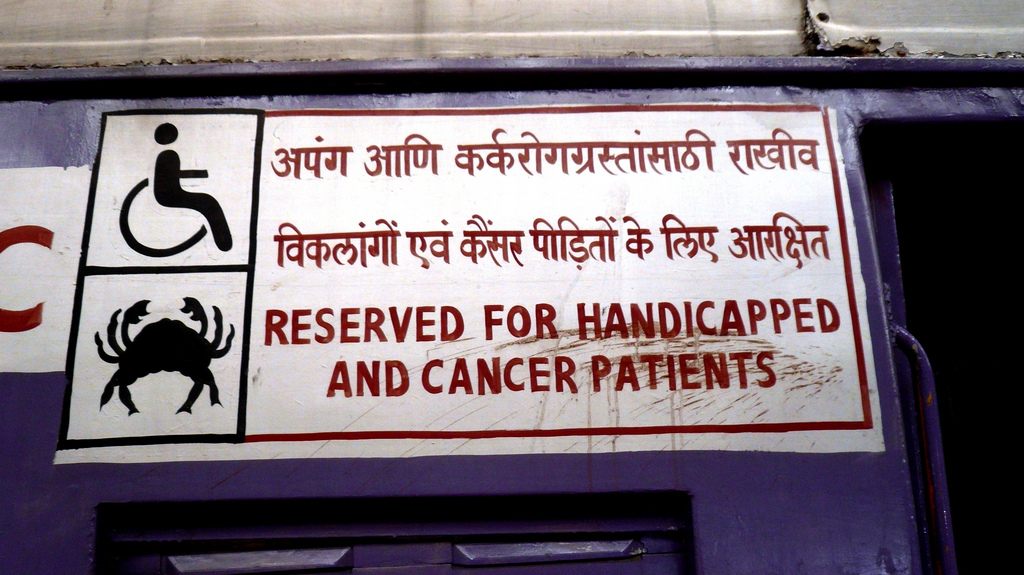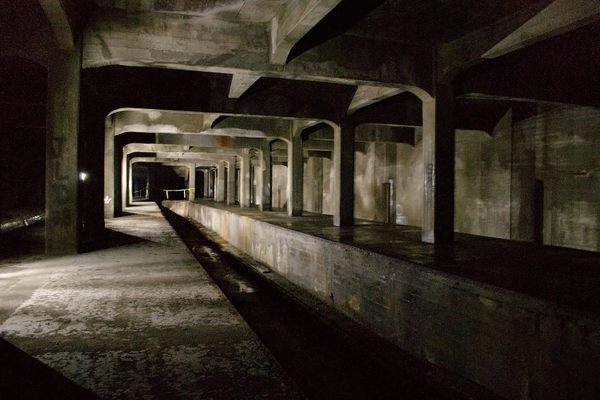Inside the Mumbai Deaf Community’s Unique Public Transit Culture
The city’s rail system offers deaf riders special compartments that double as bustling meet-up spots.

A few years ago, Sujit Sahasrabudhe, a teacher and researcher, was walking into Mumbai’s CST railroad station with his father when he realized he was caught in a classic commuter conundrum: he was holding a hot cup of coffee, and the train car he wanted to ride in was at the other end of the platform. As his father prepared to duck into the nearest compartment, gesturing for his son to join him, Sahasrabudhe decided to risk it, and started to sprint. “I ran and ran with that coffee,” he later recalled. “I was so relieved when I sat down.”
He wasn’t just trying to position himself for an easy transfer. Sahasrabudhe, who is deaf, was running to what the rail system refers to as its “Handicapped Compartment,” or HC. There, he expected to meet—as he did every day—a growing, shifting group of fellow deaf people, both old friends and new acquaintances. As the anthropologist Annelies Kusters explains in a recent paper in the Journal of Cultural Geography, for deaf Mumbaikars, a commute in the HC isn’t just getting to and from work or school—it is equivalent to “checking into the deaf network, into a space of potential.”
Kusters, who’s from Belgium, first went to India in November of 2006 to attend a conference for deaf people. Afterward, her new friends showed her around Mumbai. “Their movements and interactions in the city fascinated me,” she later wrote. In a series of articles and short films, Kusters has since explored how deaf people in Mumbai have taken a quotidian task, the commute, and turned it into a dynamic, social experience—one that many of them actually look forward to.

Mumbai is the most densely populated city in India, and about seven and a half million people use the city’s public rail network, the Mumbai Suburban Railway, every day. Most start in the more residential, northern part of the city and travel between 1 and 20 miles south to the business district, at the tip of the peninsula. In the evening, they head back uptown again. “The train is [Mumbai]’s lifeline,” one of Kusters’s interviewees, Ajay, told her. “If at some point the train stops working, everything collapses.”
As such, rush hour in Mumbai is no joke: at every stop, people pour in and out of cars, vying for space and sometimes hanging out of the train doors in order to fit. Although the city has tried to keep up with demand by adding new cars and stops, morning and evening commuters often find themselves a part of what experts call “super dense crush loads,” in which up to 15 passengers may pack into a single square meter of floor space. “The situation seems insane, but is in fact a daily routine,” writes Kusters.
To minimize fallout from these super-dense crushes, certain cars are set aside for particular demographics. Every train has at least one “Ladies Compartment”—reserved for women and young children only—and at peak hours, an entire train or two may be designated a “Ladies Special,” a provision that just celebrated its 25th anniversary. Since 1993, there have also been between one and three Handicapped Compartments, or HCs, on every train.
The extra space in the HCs allows people with disabilities and chronic illnesses to use the trains without having to fight for a place to stand. But it also has another benefit: it allows deaf people to sign, a difficult endeavor in the other cars. “In the general compartments it was so crowded that when there was a deaf person with you, you could sign only small signs above people’s heads,” one of Kusters’s interviewees, Rohan, told her. “[In the cars], hearing people can chat with each other…[but] deaf people cannot communicate that way.” In the less crowded HCs, though, there is room to converse, one-on-one or in large groups. “Now I feel free,” Rohan puts it. “I have space to communicate.”
Social use of special train cars isn’t unique to deaf riders: on the Ladies Special, “[women] cut vegetables, give each other advice, [and] celebrate festivals,” says Kusters. In the HCs, deaf travelers have fully embraced the camaraderie of commuting, turning the train into what Kusters calls “a destination in its own right.”
During a given commute, Kusters writes, a deaf person who gets on at a northern stop will enter an HC and begin carving out space for other deaf people. They might text their friends to let them know which car they’re in, or when they’ll be coming through a relevant station. As more deaf people hop on, they’ll form a group within the compartment, chatting and trading news until it’s time to get off.

Then, in the evening, they do it all again, in the other direction. If someone is having a particularly great chat, they might overshoot their intended destination, get off with their friends, and head back the other way.
It’s not as though deaf Mumbaikars don’t hang out anywhere else, writes Kusters—Mumbai has 22 schools for the deaf, as well as a number of clubs and gathering places. But the HCs are special. For one thing, they enable both a convenience and a visibility that other meeting places cannot. “If you want to meet a person, and I don’t mean just sending text messages… you can just catch the train at a particular time and talk there,” one interviewee, Ajay, told Kusters. The train-going experience as a whole is conducive to signing, according to Kusters, and deaf people will often talk to each other through train windows, or from platform to platform across the tracks.
While traveling in the HCs, Kusters writes, she often met hearing people who were able to carry on basic signing conversations. Rohan told her he has noticed that since deaf people have begun gathering and speaking on platforms, they attract fewer confused hearing onlookers. “Now they see it and just pass and continue on their way,” he says. He takes this as a good sign: “It means that awareness is spreading widely.”

The HCs also facilitate both the maintenance of old friendships and the formation of new ones. “In the space of the handicapped compartment you see another deaf person and ask him who he is,” Rohan told Kusters. “On the road this doesn’t happen; you walk past each other, and you don’t know the other is deaf, too.” Deaf acquaintances on the HCs make a point of greeting one another, even waking up their snoozing compatriots to do so.
This communality and comfort transforms an everyday experience into something more. “When the train comes I’m not excited right away, but when I get inside, I feel a big change,” one commuter, Harish, told Kusters. “Like I’m walking on a dirty road and suddenly I see something beautiful at the end of the road. The train is also like that: at the outside it’s nothing, but inside it’s something beautiful.”
At this point, Kusters knows this as well as anyone. After meeting Sujit Sahasrabudhe during her first visit to Mumbai in 2006, and riding the HCs with him throughout subsequent research trips, the two were married in 2010. (Their first kiss was in an HC, she says.) “Now we have two kids, and we have just moved to Edinburgh,” she says. A testament to the power of commuting done right.














Follow us on Twitter to get the latest on the world's hidden wonders.
Like us on Facebook to get the latest on the world's hidden wonders.
Follow us on Twitter Like us on Facebook